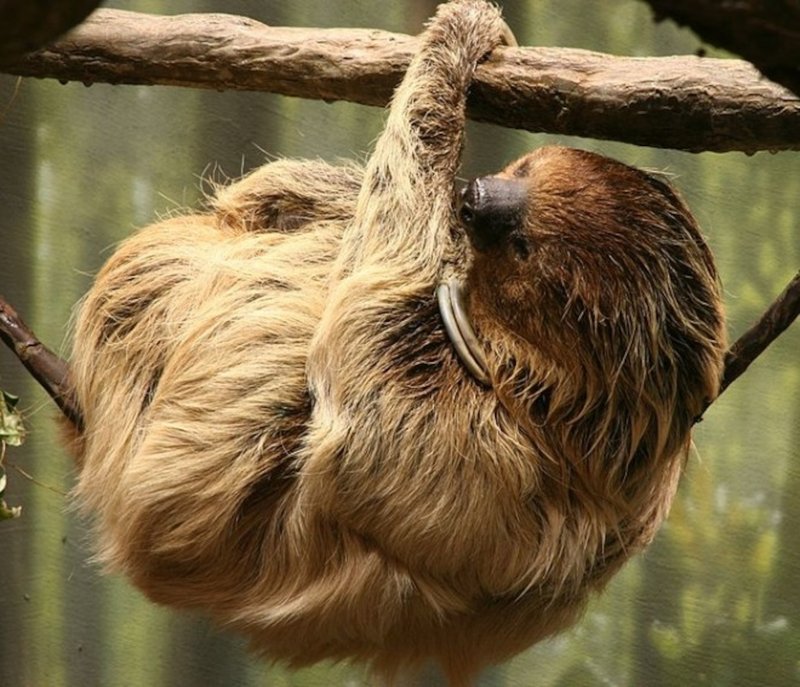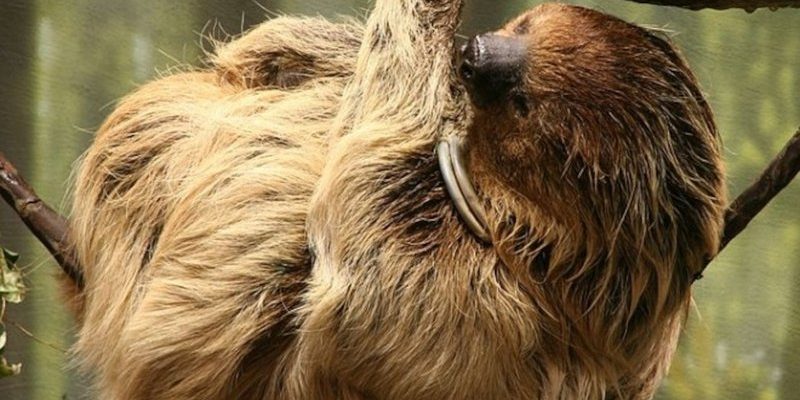
The story of sloths begins millions of years ago, long before they became the internet’s favorite lazy animal. Their ancestors existed in a world that’s hard for us to imagine: a landscape filled with giant creatures and lush forests. As we explore this history, we’ll uncover how sloths evolved, adapted, and thrived in different environments, and how they’re linked to some truly fascinating relatives.
The Origins of Sloths
The tale of sloths starts in the late Paleocene epoch, about 60 million years ago. They belong to a group of animals called Xenarthrans, which also includes anteaters and armadillos. This group is unique to the Americas, and it’s like a family reunion of cuddly, quirky creatures. The first sloths were actually quite different from the ones we know today. They were small, agile, and lived up in trees.
When you think about evolution, it’s all about adapting to survive. These early sloths likely had to compete with other animals for food and shelter. As forests expanded, sloths adapted to a life in the trees, developing longer claws and a slow metabolism that helped them conserve energy. It’s like they turned their lifestyle into a superpower, allowing them to thrive in their leafy homes.
The Megatherium and Other Giants
Fast forward to the Pleistocene epoch, around 2.6 million to 11,700 years ago, and we find ourselves amid the awe-inspiring giants of the sloth family. One of the most famous is the Megatherium, or the giant ground sloth, which could grow as large as a modern-day elephant! Imagine that—a sloth the size of a car lumbering through prehistoric forests, grasslands, and even across ice-covered landscapes.
These giant sloths were herbivores, munching on leaves, fruits, and even tougher vegetation that would have left other animals weak in the knees. They roamed not just across South America but even made their way into North America. Their massive size offered advantages, like deterring predators. When you’re that big, most animals think twice before messing with you!
However, the advent of humans brought significant changes. As people spread across the continents, they began hunting these giants for food. Unfortunately, this pressure contributed to the extinction of many megafauna in the Americas, including the magnificent Megatherium.
The Survival of the Modern Sloth
Today, there are two main types of sloths: two-toed and three-toed. While they look similar, each has its own unique adaptations and quirks. The two-toed sloth, for example, is often more active than its three-toed counterpart and has a slightly different diet, preferring leaves from specific trees.
Modern sloths have a fascinating set of adaptations. Their slow movements aren’t just for show; they actually help them avoid detection by predators. In fact, they can turn green due to algae growing on their fur, which acts as excellent camouflage in the treetops. It’s nature’s way of saying, “If you can’t run fast, you might as well blend in!”
Interestingly, sloths aren’t just about hanging around. They have a unique digestive system that allows them to break down tough plant materials, but it takes a long time—up to a month—to process food! This slow metabolism is perfectly suited to their low-energy lifestyle. Honestly, who needs the hustle and bustle when you can take life one leaf at a time?
Sloths in a Changing World
With the rapid changes brought about by climate change and habitat destruction, sloths face new challenges today. Their natural habitats are shrinking, which directly affects their food sources and safety. Deforestation, driven by agriculture and urban development, poses a significant threat to these gentle creatures.
Conservation efforts are being made to protect sloths and their habitats, but it requires a collective human effort. Local communities, environmental organizations, and governments are working together to create protected areas, promote sustainable land use, and educate people about the importance of sloths in the ecosystem. It’s like a team effort, where everyone has a role in keeping the balance.
The Fascination with Sloths
So why are sloths so beloved? Their quirky, slow-paced lifestyle is completely at odds with our fast-paced world, reminding us to slow down and enjoy life. Social media plays a big role in their popularity. With countless memes and videos showcasing their adorable antics, it’s no wonder that sloths have captured the hearts of many.
Moreover, these creatures play a vital role in their ecosystems. By munching on leaves and branches, they help shape the trees they inhabit. Their waste also fertilizes the forest floor, supporting a diverse array of plant life. In essence, sloths are not just cute; they’re crucial to maintaining the health of their environment.
You might be wondering how you can help protect sloths. Supporting wildlife conservation efforts, reducing deforestation, and spreading awareness about these remarkable animals can contribute to their survival. Every little bit counts, and together, we can make a difference.
Final Thoughts
The evolutionary history of the sloth is a fascinating journey filled with ancient giants, unique adaptations, and the ongoing struggle for survival. From their origins as small tree-dwellers to their impressive relatives in the past, sloths have proven to be resilient creatures that have adapted to a changing world.
As we marvel at the charm of modern sloths, let’s not forget the importance of their conservation. Understanding their history helps us appreciate their role in our world and inspires us to protect these incredible animals for future generations. So, the next time you see a sloth hanging out, remember the rich tapestry of evolution that brought them to us and the responsibility we have to ensure their future.

